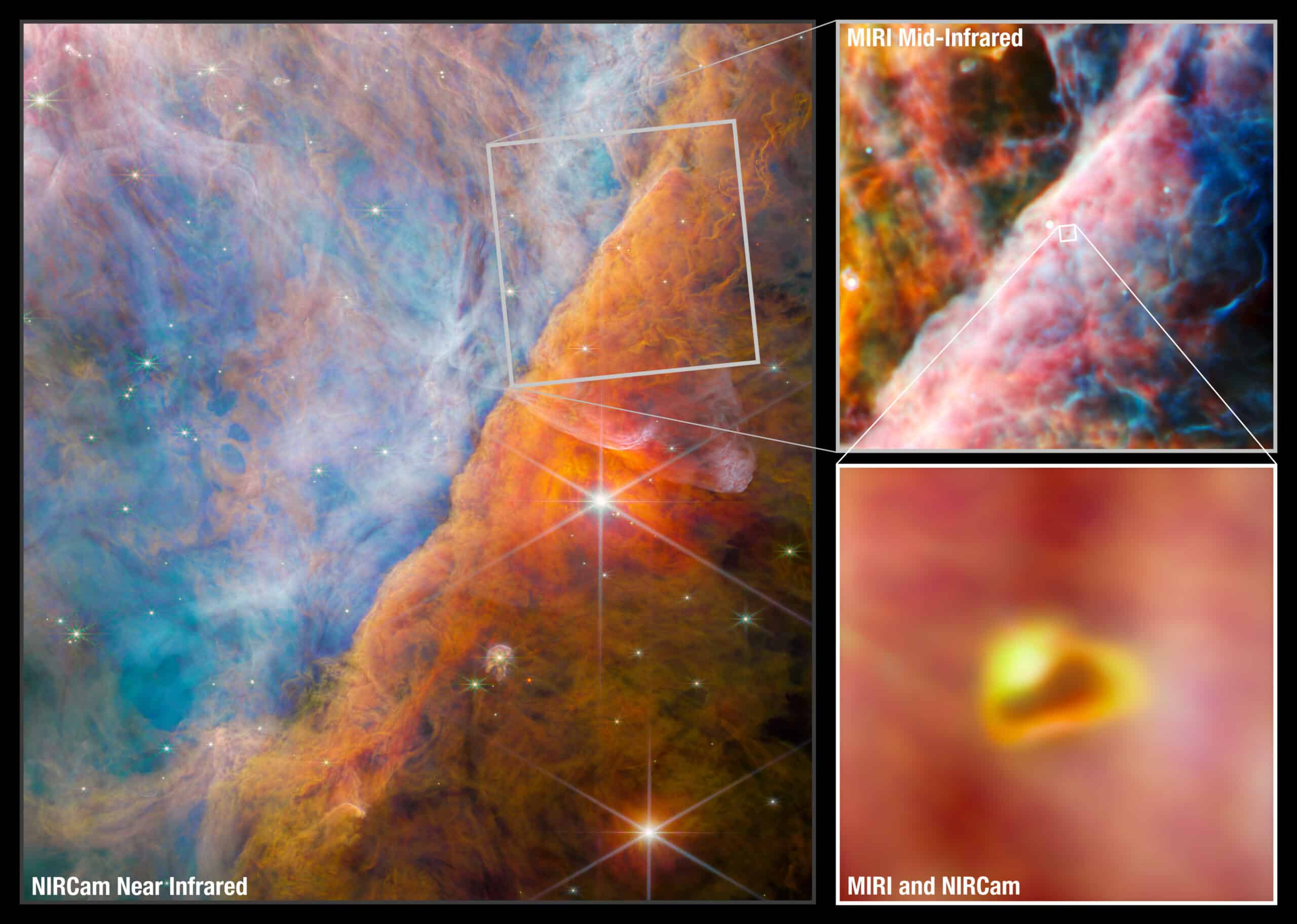
The molecule methyl cation (CH3+) is very simple, yet very instrumental. It also has a really unique property. Although it reacts relatively ineffectively with hydrogen, the most prevalent element in the universe, it reacts with other molecules quite easily. This, in turn, starts the development of increasingly complex carbon-based compounds.
Its presence in space has never been found in space….until now.
Utilizing the James Webb Space Telescope (JWST), a team of international scientists detected the carbon compound in space for the first time. Its discovery in a young star system, d203-506, located approximately 1,350 light-years away in the Orion Nebula, opens up some exciting possibilities for understanding the origins of life on Earth — but also for the potential for life elsewhere in the Universe.
The role of CH3+ in interstellar carbon chemistry was predicted in the 1970s, and now, thanks to the JWST’s Mid-Infrared Instrument (MIRI) and Near Infrared Spectrograph (NIRSpec), it has been observed in a region of space where life-sustaining planets could potentially develop.
Molecular ions containing carbon are especially important as they react with other small molecules, even at low temperatures in interstellar space, to form more complex organic compounds. CH3+ is one such carbon-based ion and has been theorized to be a linchpin of interstellar organic chemistry.
The recent discovery of CH3+ validates these theories and opens up new avenues for research in multidisciplinary areas, including the formation and composition of systems analogous to our own solar system.
“CH3+ is the precursor to nearly all carbon-bearing molecules we detect in space. Molecules that formed from CH3+ are found in stars and planets that are born in distant galaxies, tracing the early stages of galactic formation in the universe,” said Ted Bergin, University of Michigan Department of Astronomy chair.
“This detection validates decades-old theories about how molecules are formed in the cold, tens of degrees above absolute zero (-441 degrees Fahrenheit) reaches of interstellar space.”
The d203-506 star system is home to a small red dwarf star, which experiences intense ultraviolet (UV) radiation from nearby hot, young, massive stars. While UV radiation is known to break down complex organic molecules, the team believes it might play a different role in forming methyl cations. They propose that UV radiation could serve as an energy source, enabling the formation of CH3+ and subsequently promoting the creation of more intricate carbon compounds.
The team’s research, published in Nature, provides a solution to the long-standing conundrum of how intense UV radiation affects the formation of complex organic molecules. The presence of CH3+ in the protoplanetary disk suggests that UV radiation plays a critical role in the early chemical stages of the origins of life.
The team’s findings challenge the notion that UV radiation is purely destructive to forming organic molecules and provide insights into the formation and composition of planetary systems.
The scientists note that the composition of the molecules observed in d203-506 differs significantly from typical protoplanetary disks. Surprisingly, no signs of water were detected, suggesting that UV radiation can profoundly impact the chemical makeup of protoplanetary disks. This finding indicates that UV radiation might play a critical role in the early chemical stages of life’s origins.
The discovery of methyl cation and its potential role in forming complex carbon molecules significantly advances our understanding of interstellar chemistry and the conditions necessary for life to emerge. By shedding light on the chemical processes occurring in protoplanetary disks, scientists can gain insight into the potential habitability of exoplanets and the likelihood of life elsewhere in the universe.
“This detection not only validates the incredible sensitivity of Webb but also confirms the postulated central importance of CH3+ in interstellar chemistry,” said Marie-Aline Martin-Drumel of the University of Paris-Saclay in France, a member of the science team.









